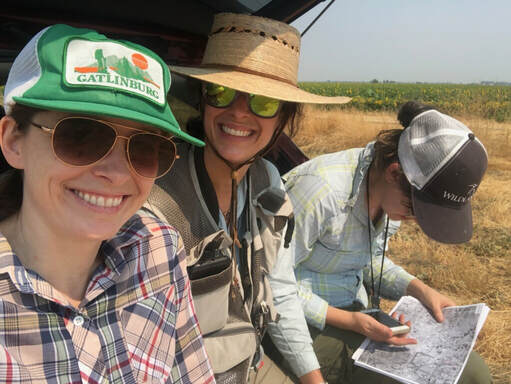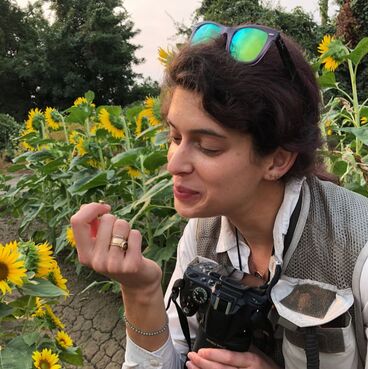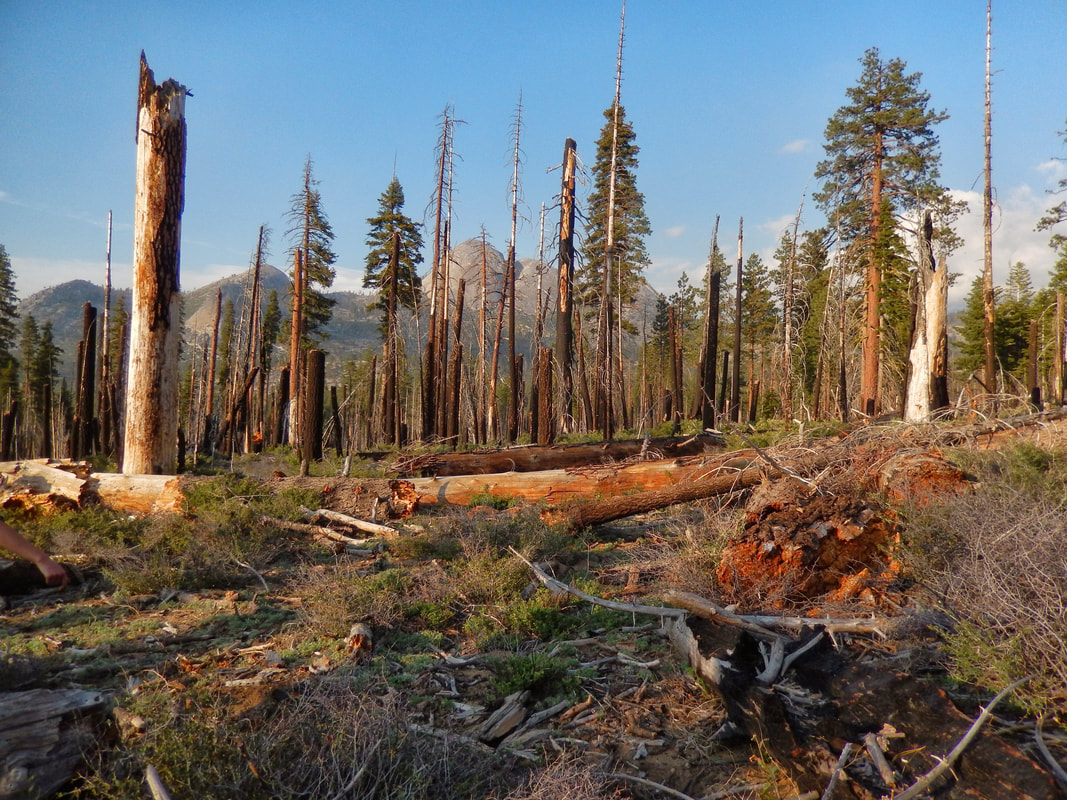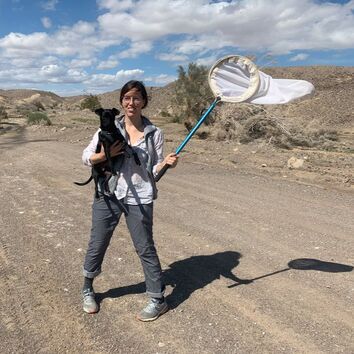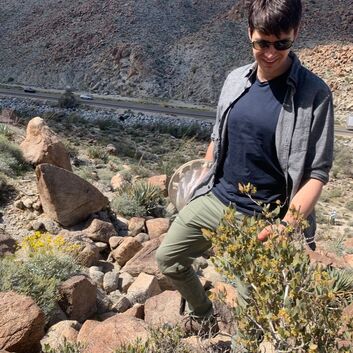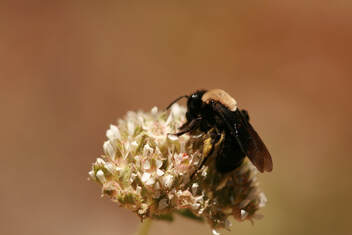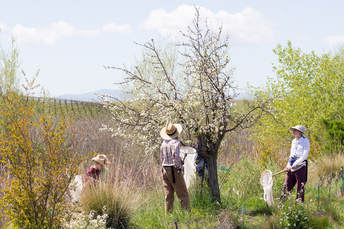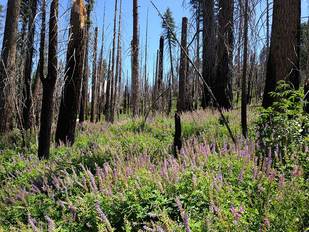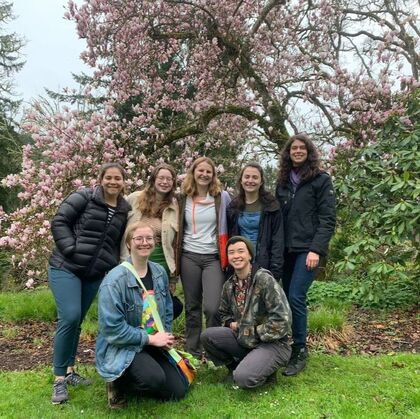
We focus on understanding the mechanisms by which species interactions maintain species diversity, and how we can harness these processes to manage and restore diversity in human-modified systems. We focus on pollinators because they are critical for pollination in managed and natural plant communities, but our research is broadly applicable across ecological interactions. Our aim to discover new insights into how communities form, evolve, and persist through time and space, aiding in the prediction and prevention of community collapse. We combine modeling, synthesis and field-based work, and adhere to the principles of reproducible, open science.
In addition, another focus of the lab is promoting diversity and inclusivity in the sciences. We advocate for women and other underrepresented groups in sciences.
In addition, another focus of the lab is promoting diversity and inclusivity in the sciences. We advocate for women and other underrepresented groups in sciences.
Considerations for LGBTQ+ Friendly Field Work
By Rebecca Hayes for the American Society of Plant Biologists
 https://freedomforallamericans.org/states/
https://freedomforallamericans.org/states/
Field work often takes place in areas far from home and can require tolerating close quarters, strenuous labor, long hours, and adverse weather conditions. LGBTQ+ people face unique challenges navigating the unusual circumstances of sampling remote sites. The following are some suggestions for consideration to promote a comfortable environment for LGBTQ+ scientists if you are planning or participating in field work this summer. This list was produced based on personal experience and conversations with friends, so certainly it is non-exhaustive.
Explicit allyship
Make it clear that you are an ally in job postings and on websites where potential students or employees can find your contact information, most importantly when your work is conducted where it could be dangerous to be LGBTQ+. In the United States, 29 states have no anti-discrimination laws protecting LGBTQ+ people from unfair treatment based on gender or sexuality. Worldwide, there are 73 countries that criminalize same-sex sexual activity and 15 that criminalize the gender expression or identity of transgender people. Your students and employees need to know that you support them, especially if your research takes place somewhere they may feel particularly unsafe.
Awareness of regional attitudes towards LGBTQ+ individuals
Know where to find information about the local customs and cultural norms toward LGBTQ+ people to provide to students (the US Department of State has a section about international travel for LGBTQ+ folks). Even where there are no explicit laws, certain regions are more unwelcoming. Along those lines, never bring up someone’s LGBTQ+ identity without their initiation. Just because someone is out in certain circumstances does not mean they feel comfortable being out everywhere. Field work can leave people feeling particularly vulnerable especially when around new people or in places with general cultures of unacceptance.
Culture of inclusivity
Make your field team intentionally inclusive. At the beginning of the season, make it clear that bigotry will not be tolerated, and mean it. This should be done in lab environments too, but field projects in particular have unique opportunities for boundaries to be crossed. Long hours are spent working in remote locations with the same people, which is followed by eating meals with those same people, then sleeping near each other, and often have recreational time together as well in free time. A culture of alcohol consumption is common, and tensions run high after difficult days. Have check-ins with students and employees with long field seasons to ensure their comfortability; field work may be physically hard but doesn’t need to be emotionally hard.
Clear and early communication about housing
Often times, housing at universities and field stations is split by gender. However, choice should be given to students and technicians to decide who they share quarters with. It should be clear what the sleeping arrangements and bathroom/shower expectations well before people show up to work (these things may be embarrassing for people to ask up front, so include this information in onboarding procedures). Field work that requires camping in tents should be planned so that each person can have their own tent if desired.
read more
Explicit allyship
Make it clear that you are an ally in job postings and on websites where potential students or employees can find your contact information, most importantly when your work is conducted where it could be dangerous to be LGBTQ+. In the United States, 29 states have no anti-discrimination laws protecting LGBTQ+ people from unfair treatment based on gender or sexuality. Worldwide, there are 73 countries that criminalize same-sex sexual activity and 15 that criminalize the gender expression or identity of transgender people. Your students and employees need to know that you support them, especially if your research takes place somewhere they may feel particularly unsafe.
Awareness of regional attitudes towards LGBTQ+ individuals
Know where to find information about the local customs and cultural norms toward LGBTQ+ people to provide to students (the US Department of State has a section about international travel for LGBTQ+ folks). Even where there are no explicit laws, certain regions are more unwelcoming. Along those lines, never bring up someone’s LGBTQ+ identity without their initiation. Just because someone is out in certain circumstances does not mean they feel comfortable being out everywhere. Field work can leave people feeling particularly vulnerable especially when around new people or in places with general cultures of unacceptance.
Culture of inclusivity
Make your field team intentionally inclusive. At the beginning of the season, make it clear that bigotry will not be tolerated, and mean it. This should be done in lab environments too, but field projects in particular have unique opportunities for boundaries to be crossed. Long hours are spent working in remote locations with the same people, which is followed by eating meals with those same people, then sleeping near each other, and often have recreational time together as well in free time. A culture of alcohol consumption is common, and tensions run high after difficult days. Have check-ins with students and employees with long field seasons to ensure their comfortability; field work may be physically hard but doesn’t need to be emotionally hard.
Clear and early communication about housing
Often times, housing at universities and field stations is split by gender. However, choice should be given to students and technicians to decide who they share quarters with. It should be clear what the sleeping arrangements and bathroom/shower expectations well before people show up to work (these things may be embarrassing for people to ask up front, so include this information in onboarding procedures). Field work that requires camping in tents should be planned so that each person can have their own tent if desired.
read more
Making Nature Less Predictable
Story by Ashley Braun
On a toasty morning in March, a steady stream of hikers trudges up the steep road leading into Torrey Pines State Natural Reserve. Many seek out this popular park just north of San Diego for the expansive views of the sparkling Pacific Ocean and the gnarled, endangered pine trees (Pinus torreyana) that lend the reserve its name. But a slender woman in a Panama hat and orange safety vest ignores the views. Instead, she lingers along the road’s dusty shoulder, staring intently at a patch of black sage that bursts with petite lilac flowers. Suddenly, the woman whacks the bush with a long collecting net, flipping the net expertly to contain its buzzing contents. The air erupts with the sweet, herbal fragrance of sage. Her voice betrays her disappointment. “European honeybee,” Lauren Ponisio announces. “This is the thing we’ve really noticed,” says Ponisio, an ecologist with the University of Oregon. “We just catch so many honeybees.” Ponisio and her small field crew are combing for native bees here today as part of a modern census of insect pollinators across California ecosystems, from the Pacific Coast to the Sonoran Desert and Sierra Nevada Mountains. Wielding traps and nets on the same ground where a predecessor did a landmark survey more than a half-century ago, they want to know how the Golden State’s pollinators have changed, and begin to understand what it could mean for California... read more
Oregon Quarterly: Queen of the bees
STORY BY TIM CHRISTIE
PHOTOS BY NICOLAS WALCOTT
On a brilliant, balmy, late winter’s afternoon, entomologist Lauren Ponisio walks along a ridge above the McKenzie River, through a landscape transformed by fire from a forest of Douglas fir into a blackened moonscape. She stops to inspect the remnants of a slash pile strewn with blackened stumps and snags. White flags mark the spots where she and her students had sown native plant seeds the previous fall. Amid the rubble, she spots a few green leaves poking through the ashy soil.
The plot doesn’t look like much right now. But Ponisio, an assistant biology professor at the University of Oregon, has high hopes that this pilot study could change how forestlands in the Northwest are managed, particularly post-harvest and post-fire, to the benefit of the humble, and troubled, wild bee.... read more
The Conversation: Flower mixes keep bees healthy
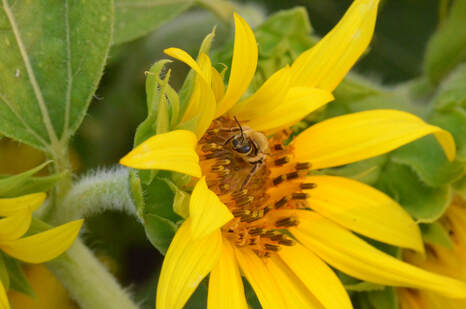
by Hamutahl Cohen
It’s springtime in California, and bees are emerging to feast on flowering fields – acres upon acres of cultivated almonds, oranges and other fruits and nuts that bloom all at once for just a few weeks. Farmers raise these lucrative crops in monoculture fields, each planted with neat, straight rows of a single type of crop.
The agricultural heart of California is the Central Valley, one of the most productive agricultural regions in the world. I recently drove north through the valley on Interstate 5, a 450-mile (724-kilometer) stretch of monoculture farms and agricultural land that runs from Bakersfield to Redding. Flowers were blooming as far as the eye could see. There is so much bloom here that commercial beekeepers truck in over 2 million colonies of bees in spring to ensure that every last flower is pollinated.
As a bee biologist, I study why bees are dying. Although monoculture blooms provide food for bees, scientists know almost nothing about how temporary mass-bloom events influence bee health. ... read more
It’s springtime in California, and bees are emerging to feast on flowering fields – acres upon acres of cultivated almonds, oranges and other fruits and nuts that bloom all at once for just a few weeks. Farmers raise these lucrative crops in monoculture fields, each planted with neat, straight rows of a single type of crop.
The agricultural heart of California is the Central Valley, one of the most productive agricultural regions in the world. I recently drove north through the valley on Interstate 5, a 450-mile (724-kilometer) stretch of monoculture farms and agricultural land that runs from Bakersfield to Redding. Flowers were blooming as far as the eye could see. There is so much bloom here that commercial beekeepers truck in over 2 million colonies of bees in spring to ensure that every last flower is pollinated.
As a bee biologist, I study why bees are dying. Although monoculture blooms provide food for bees, scientists know almost nothing about how temporary mass-bloom events influence bee health. ... read more
Pollinator conservation in CA Q & Awith Lauren, Hollis Woodard and Hillary Sardinas with CA Department of Fish and Wildlife chat about pollinator conservation in CA and the west, in addition to general facts about bees.
|
California Pollinator conservation webinar Experts from universities and the department of Fish andWildlife shared about the current state of pollinator conservation of bees, hummingbirds and Monarchs in California
|
Bee biologist cannot stop buzzing about her work
|
Curious: Bees in the trees (and Elsewhere)
|
Study unlocks how wild bees can survive habitat pressures
|
A research team led by University of Oregon biologist Lauren Ponisio has uncovered how native bee species may be best equipped to survive intensive agricultural practices and climate change in California’s Central Valley.
Wild bees that are persisting amid shrinking habitats are those that are flexible in their pollination behavior when around other wild bee populations, Ponisio’s team reported in a study published April 1 in Nature Ecology & Evolution. “We looked at the ability of these bees to change their roles in these plant-pollinator interaction networks,” Ponisio said. “This ability proved to be important for which species persisted in the landscape as well as for the higher number of habitat patches being occupied.”... read more |
Cannot see the forest for the bees! Bee communities and changing wildfire patterns
NPR interview with Lauren Ponisio
|
Does urbanization homogenize the biodiversity of bees?
|
Postdoc Hamutahl Cohen and lab helper Sammy prepare to sample pollintors on BLM land south of Anza Borrego State Park.
|
When you think of California in the 1970s, maybe you think of hippies, Fleetwood Mac, or skateboards. But if you’re an entomologist, you might think of all the natural spaces that have since been devoured by urbanization and wonder what happened to the native bees that lived in them. The question isn’t one of mere nostalgia or curiosity. Insect populations around the world are plunging precipitously, and scientists are scrambling to understand why. The threat to pollinating insects is particularly dire because much of the food people eat depends on them.
Lauren Ponisio, an assistant professor of entomology at UC Riverside, has embarked on a project to figure out how habitat destruction has affected native bees in California by resampling sites first studied in the 1970s. It is the first systematic attempt to evaluate the extinction risk of pollinator species across California. read more... By Holly Ober |
Postdoc Gordon Smith searches for bees on a Joba plant west of Anza.
|
Study finds natural fires help native beesPress release by Jules Bernstein
Ponisio led a study to be published this month in the journal Ecology and Evolution that examined environmental factors affecting the health of native bees. There are thousands of bee species that live in the wild, many of which are found in California. Ponisio found that these native bees are better able to survive harsh climate events, like drought, in areas where naturally occurring fires are allowed to burn. read more |
As biotic communities form, pollinators swap one plant for another
Press release by Mackenzie Smith
A new study from UC Berkeley researchers helps create a clearer understanding of how networks of plants and pollinators form over time to create biotic communities. The results of their research, which could help scientists and conservationists rebuild communities when a species goes locally extinct, are published today in Ecology Letters. read more... |
How fire diversity promotes biodiversity
Press release by Julie Van Scoy
A team of CNR researchers has found that a diversity of fires can promote the existence of more varied flowering plants and pollinators in an ecosystem, while also buffering against the negative effects of drought. read more... |

